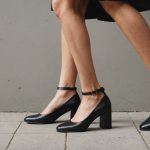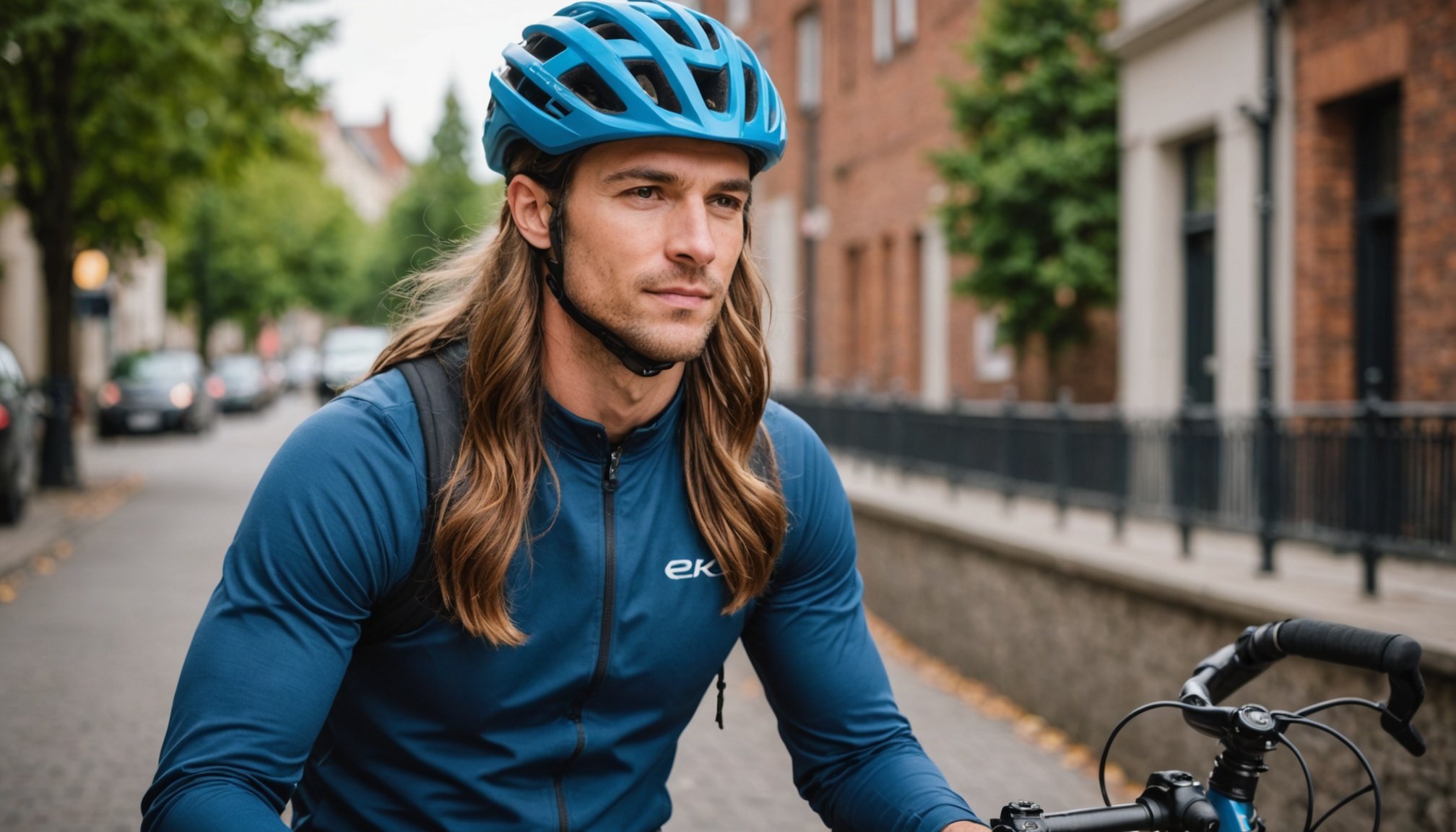Understanding the Importance of a Proper Helmet Fit
A helmet fit is crucial for ensuring maximum bicycle safety. When a helmet is properly fitted, it significantly reduces the risk of head injuries by absorbing impact and providing a snug fit to stay in place during a crash.
Cyclists with long hair face unique challenges in achieving a secure fit. Hair can create gaps between the head and helmet, compromising protection. For effective bicycle safety, it’s essential to address these issues, ensuring that long hair doesn’t hinder a helmet’s performance.
Additional reading : Effortless Transition to Natural Deodorants: Pro Tips for an Irritation-Free Switch!
Safety standards for helmets, such as those outlined by organizations like the Consumer Product Safety Commission (CPSC), are designed to ensure that helmets provide adequate protection, regardless of hairstyle. These standards consider various tests, including impact absorption and retention system effectiveness, to certify helmets. By understanding the importance of a proper helmet fit and considering the specific needs of long-haired cyclists, individuals can choose helmets that not only meet safety regulations but also accommodate their hair comfortably. This harmonious balance between safety and comfort is essential for an enjoyable and secure cycling experience.
Choosing the Right Helmet for Long Hair
Selecting the ideal helmet requires special consideration for long-haired cyclists. It involves identifying helmet types that align with both safety and comfort.
Also to read : How to Perfect Your Skincare Regimen Amidst the UK’s Wild Weather Swings
Types of Helmets Suitable for Long Hair
Finding long hair-friendly helmets involves understanding different styles. Helmets with ponytail compatibility, for example, offer a back opening tailored for ponytails. Such designs prevent compromising fit by allowing hair to be secured without affecting the helmet’s position. Additionally, full-face helmets, often used by BMX riders, provide extra space and security for longer hair.
Characteristics to Look For
When evaluating helmets, focus on those that integrate comfort features such as soft padding around the retention system. This prevents hair tangling, reducing pressure on the scalp. Ventilation is also crucial, as it promotes airflow and ensures comfort during longer rides. The presence of adjustable straps is essential to cater to varying hair volumes and styles.
Recommended Brands and Models
Beyond the helmet structure, some manufacturers prioritize long hair considerations. Brands like Giro, with models such as the Giro Women’s Verce, and Bell specifically cater to long-haired cyclists with enhanced comfort features and innovative adjustment systems, making them favourites among long-haired riders.
Styling Long Hair for a Comfortable Helmet Fit
Achieving a comfortable helmet fit with long hair can be tricky, but with the right hair styling tips, cyclists can ensure both safety and style. Opting for helmet-friendly hairstyles is key. For instance, low braids or buns can provide a secure helmet fit without creating unnecessary pressure points.
Managing long hair under a helmet involves strategic styling. Try using soft hair ties to avoid metal parts that might cause discomfort. Additionally, dividing hair into sections before arranging it can distribute volume evenly, helping avoid hotspots.
For long hair protection, it’s important to minimise tangling and damage. Consider using silk hair wraps or caps underneath the helmet for an added protective layer. These prevent hair from rubbing against the helmet padding, thus reducing breakage.
Protective measures are also vital. Regular conditioning can keep hair moisturised, reducing the likelihood of helmet-related hair stress. Furthermore, products like leave-in conditioners provide a barrier against abrasive helmet materials.
By adopting these styling approaches, long-haired cyclists can enhance their cycling experience, ensuring their hair remains manageable and healthy while maintaining optimal helmet fit.
Adjusting Your Helmet for Optimal Fit
Achieving the best helmet adjustment involves understanding precise fitting techniques, especially when accommodating long hair. Begin by loosening all straps to make minor changes easier. Place the helmet level on the head; it should sit firmly on the forehead, about one inch above the eyebrows.
Step-by-Step Adjustment Process
- Strap Adjustment: Ensure chin straps form a V shape under the ears. Tighten the buckle so only one or two fingers can fit under the strap, ensuring it’s snug yet comfortable.
- Padding: Adjust interior padding to rest comfortably, without causing gaps or pressure points. Additional padding inserts can enhance fit, crucial for long hair adaptation.
- Retention System: Utilise the rear dial or retention system. This helps secure the helmet and accommodate hair styles or volume.
Common Mistakes to Avoid
Avoid tilting the helmet backward. Ensure straps aren’t twisted and the helmet doesn’t move excessively during rides. Ignoring these factors could jeopardise safety.
Utilizing Additional Accessories
Additional accessories like helmet liners or clips help keep long hair contained and manage sweat. Such accessories are indispensable for enhancing comfort and securing the helmet’s position.
Maintaining Comfort and Safety While Riding
Ensuring cycling comfort and maintaining helmet safety involves strategic approaches, especially for those managing long hair. Cyclists should prioritise ventilation to stay cool. Opt for helmets with generous openings to facilitate airflow, reducing heat build-up during longer rides. Additionally, crucial helmet safety tips include regularly checking for wear and tear on the helmet to preserve its integrity.
For long hair management, strategic placement can alleviate discomfort and minimise damage. Using wide, soft headbands under the helmet can help hold hair in place and absorb sweat, contributing to both comfort and hygiene. It’s also beneficial to apply a leave-in conditioner before the ride to protect hair from friction-induced damage.
To guarantee the helmet stays securely in place, consistent safety tips include correctly adjusting the chin strap and ensuring the helmet remains level. Avoid tilting the helmet forward or backward, which is crucial for optimal protection. Routine checks and prompt adjustments can significantly enhance both the comfort and security of the helmet during rides, ensuring a safe and enjoyable cycling experience for long-haired individuals.
Personal Experiences and Testimonials
Cyclists with long hair often face unique challenges when it comes to achieving a secure and comfortable helmet fit. Real-life experiences from the cycling community offer valuable insights into how these challenges are tackled. One common theme is the struggle of securing long hair under a helmet without compromising on safety.
Several long-haired cyclists have shared their stories of trial and error, experimenting with various helmet types and hairstyles to find the perfect fit. For example, many have reported success with helmets designed specifically to accommodate long hair, noting the importance of comfort features such as ponytail compatibility and adjustable padding. These adjustments help balance safety and comfort, ensuring the helmet stays in place during rides.
Community feedback highlights the significance of hair styling tips that prevent hair tangling and damage. Insights into preferred helmet-friendly hairstyles, such as low ponytails or braids, reveal creative solutions to maintain a snug helmet fit. Among the long-haired cycling community, there is a shared appreciation for helmets that prioritize both cycling comfort and effective hair management. By learning from these personal experiences, new cyclists can make informed decisions to enhance their own riding experience.











